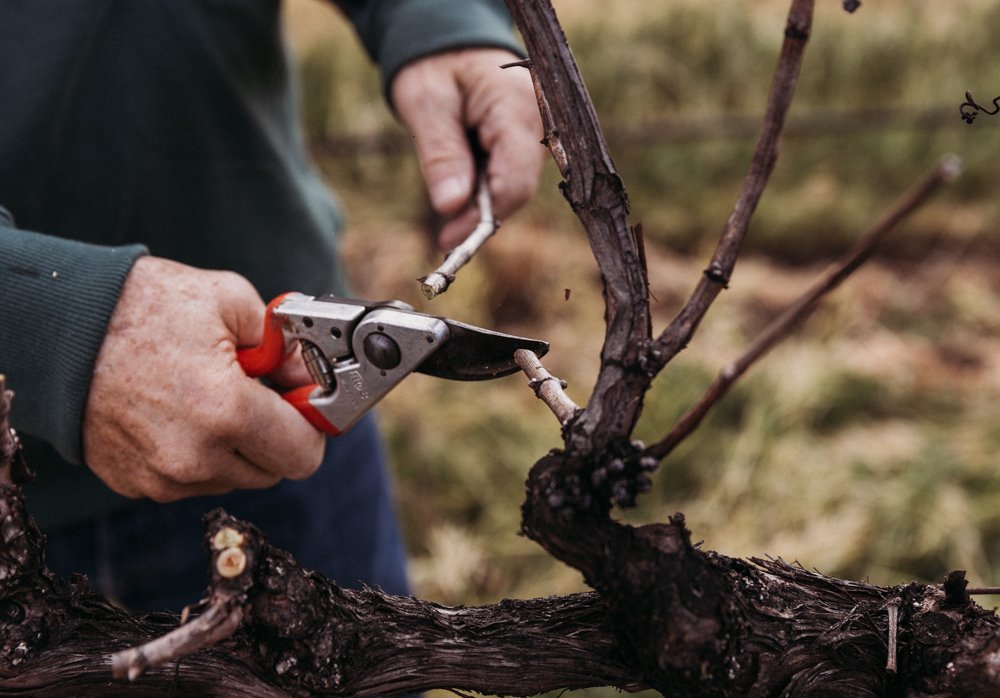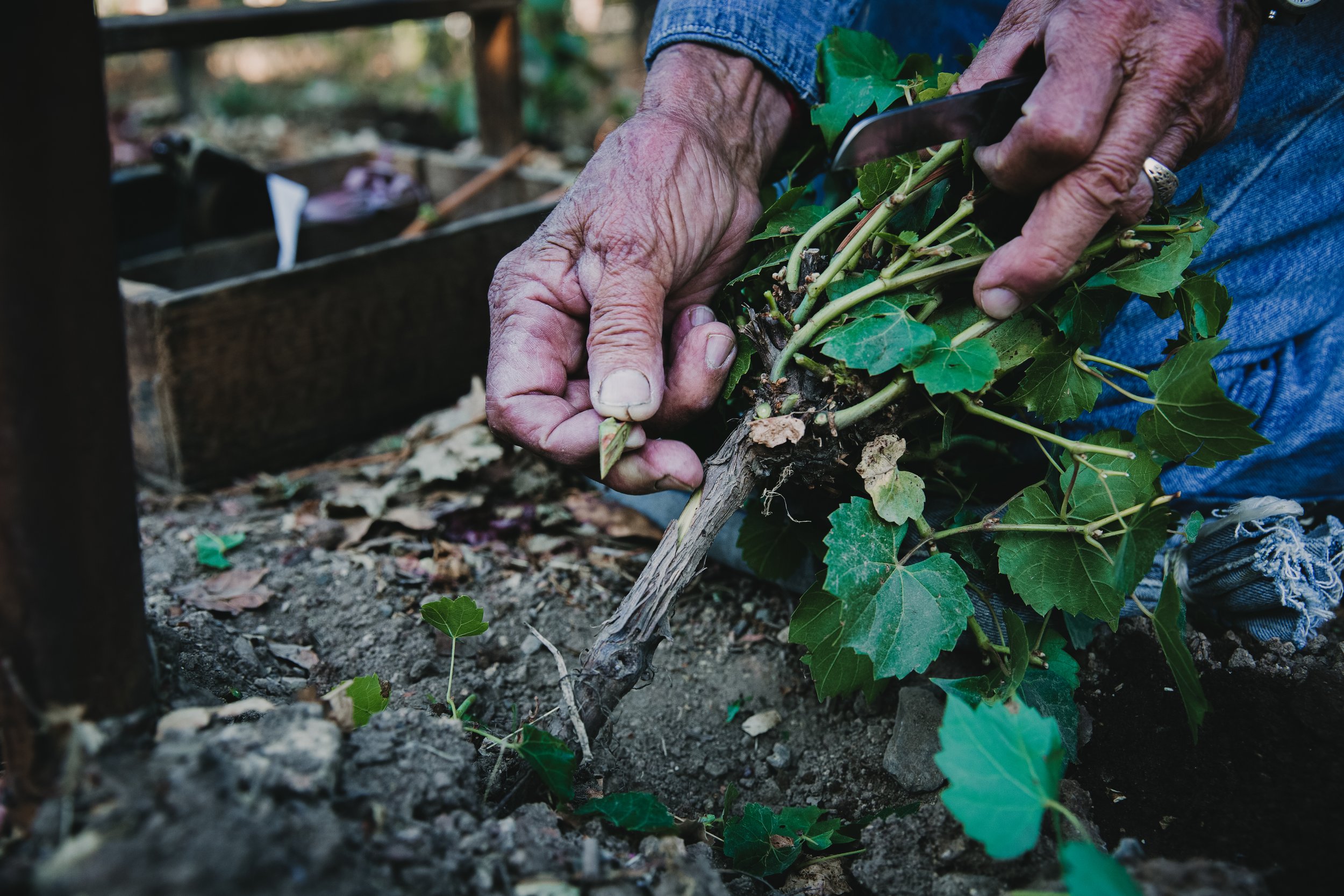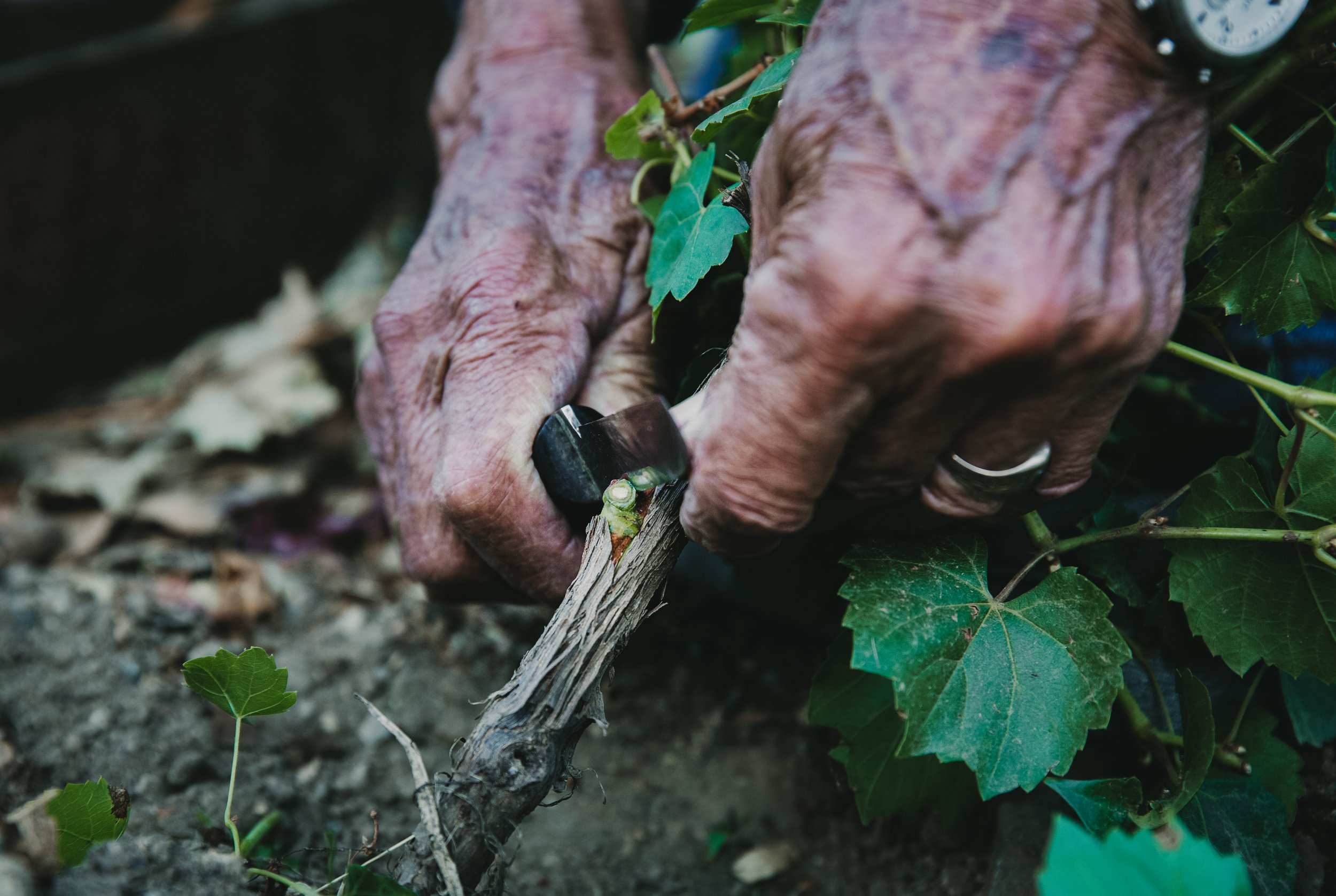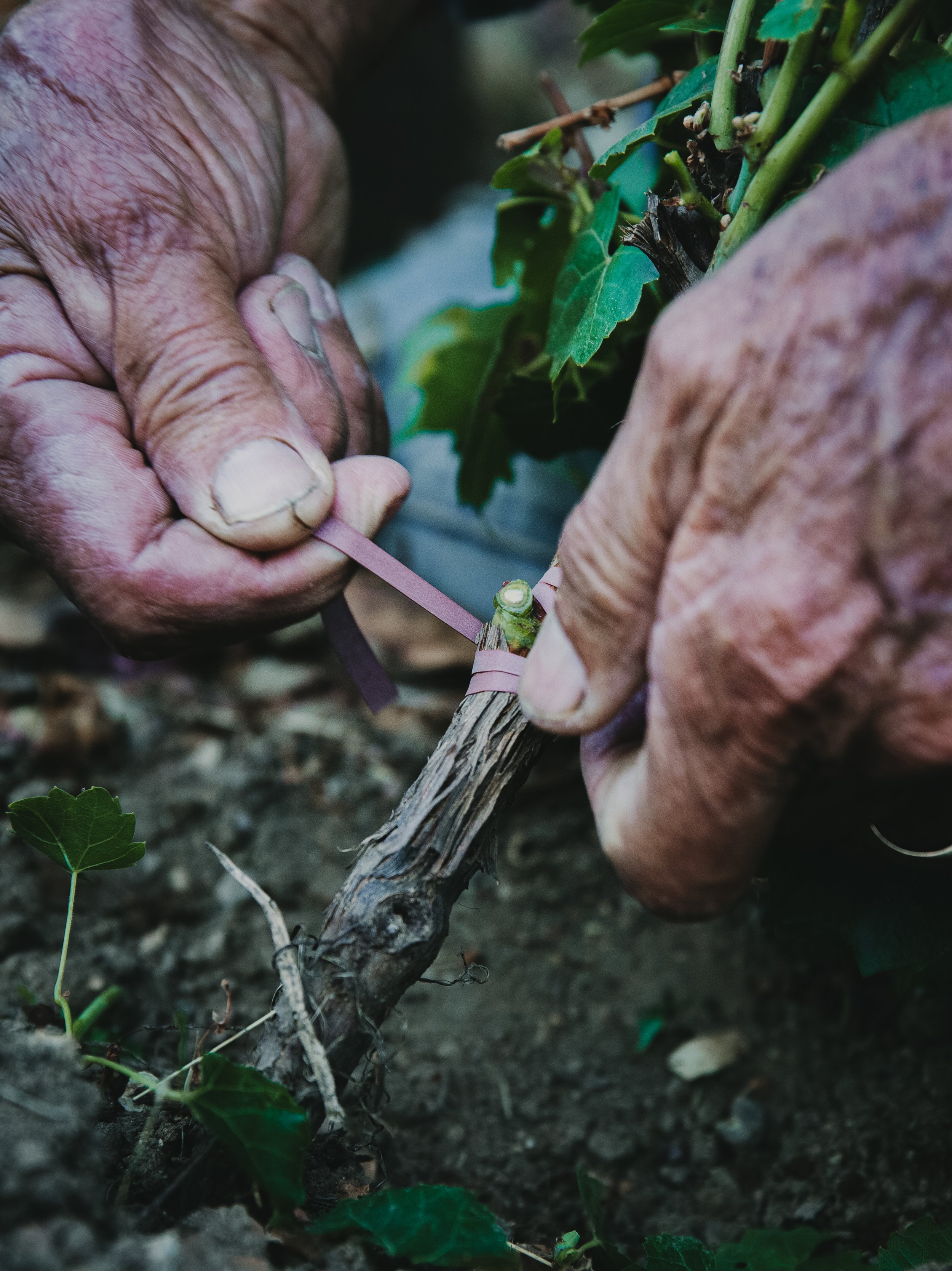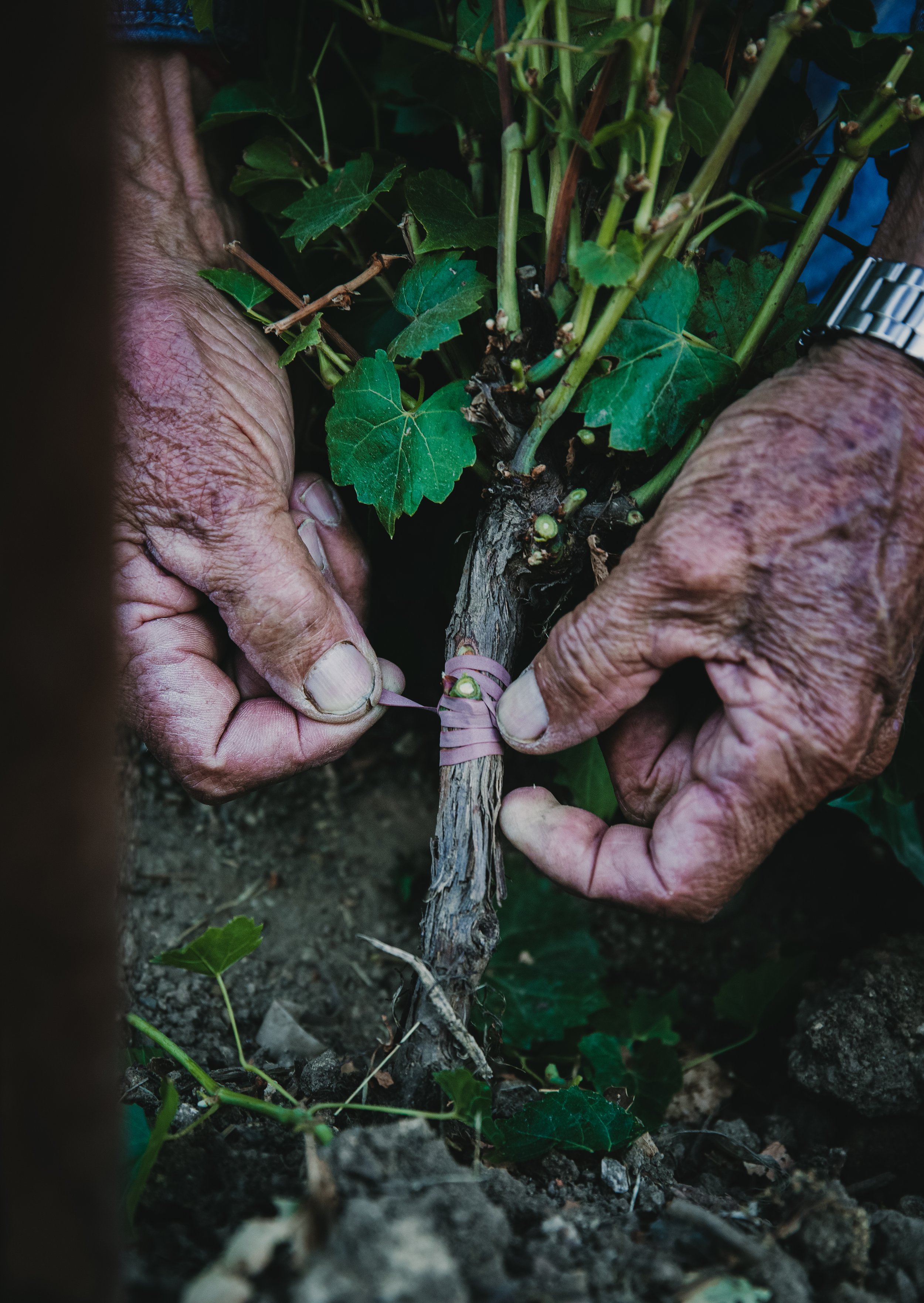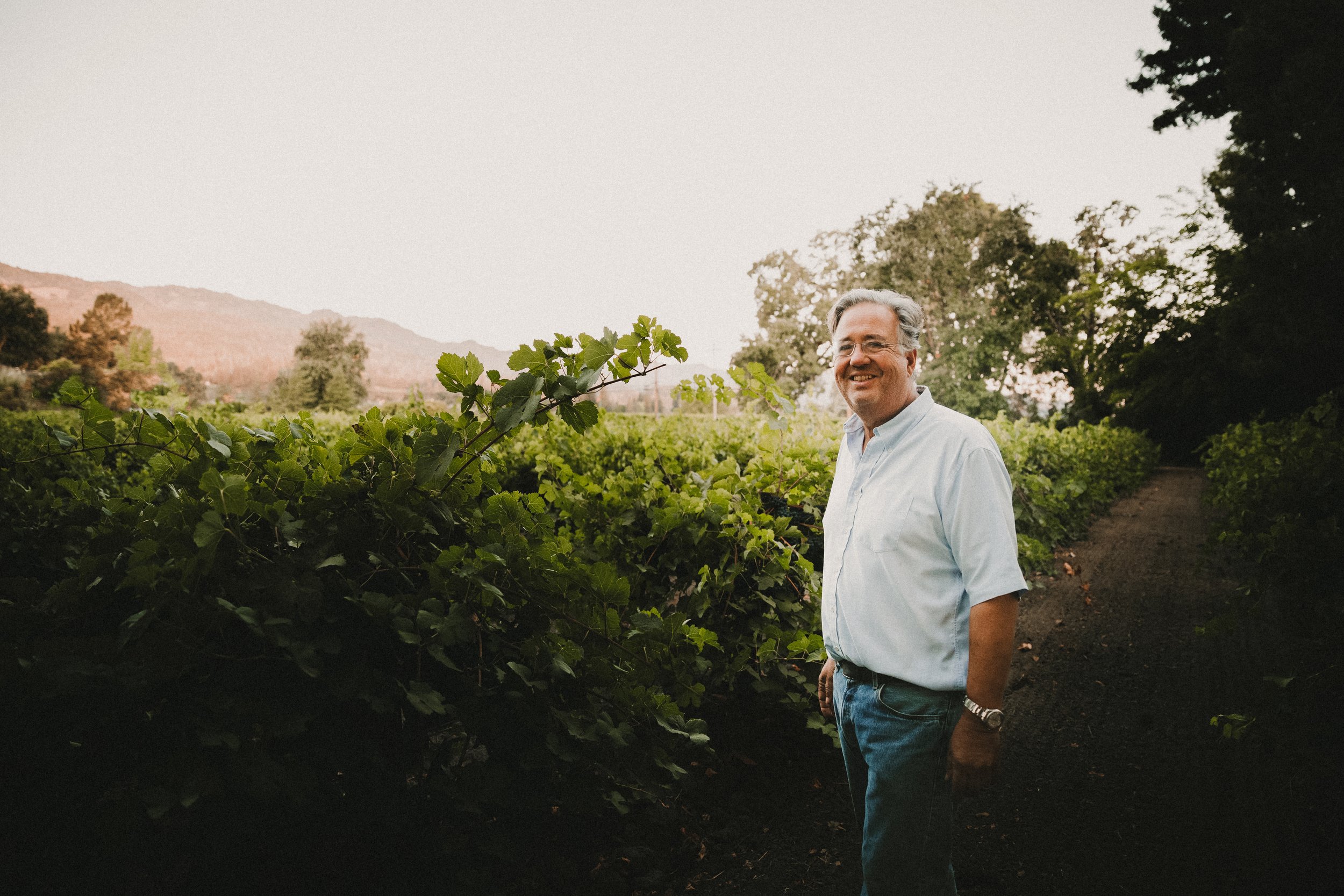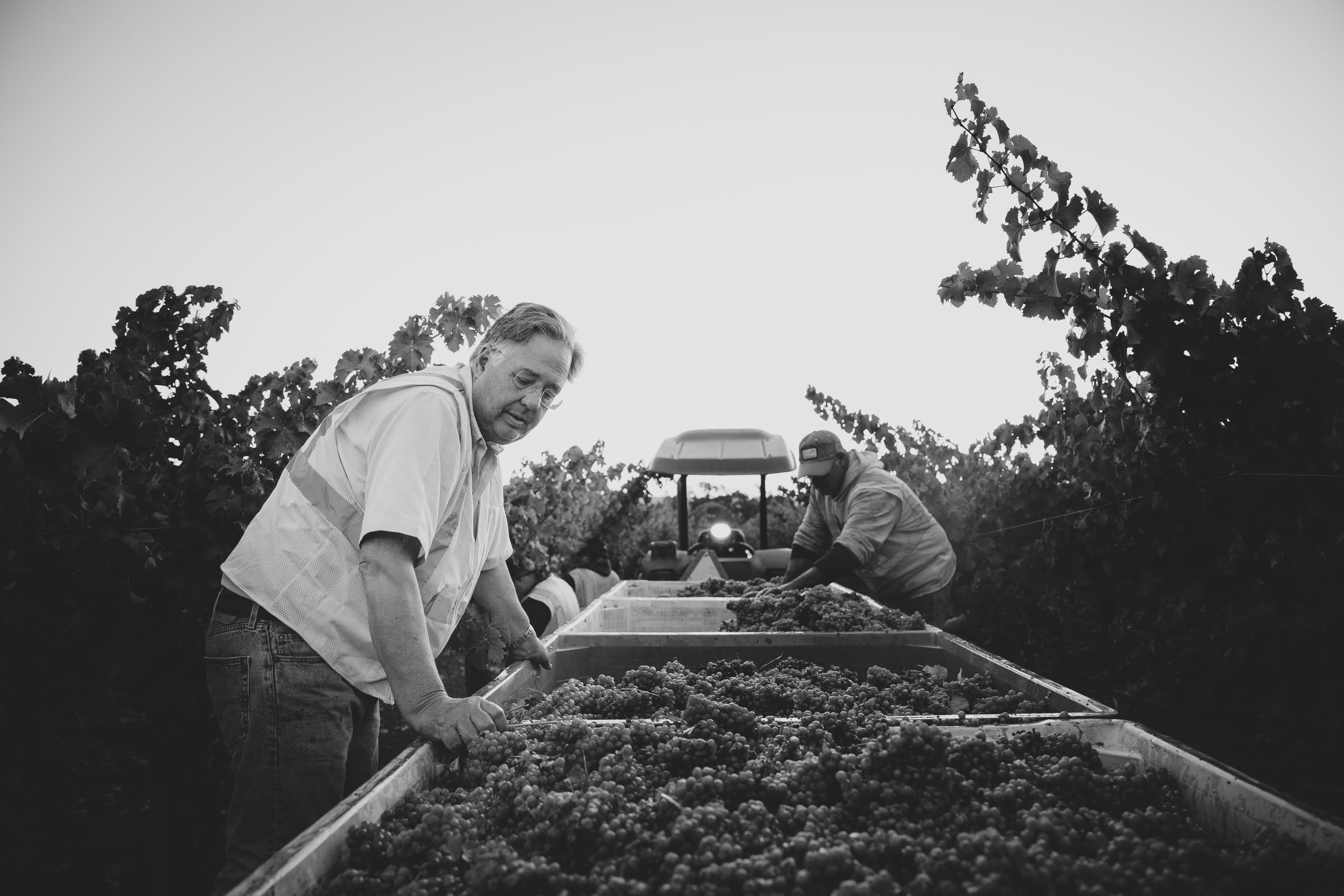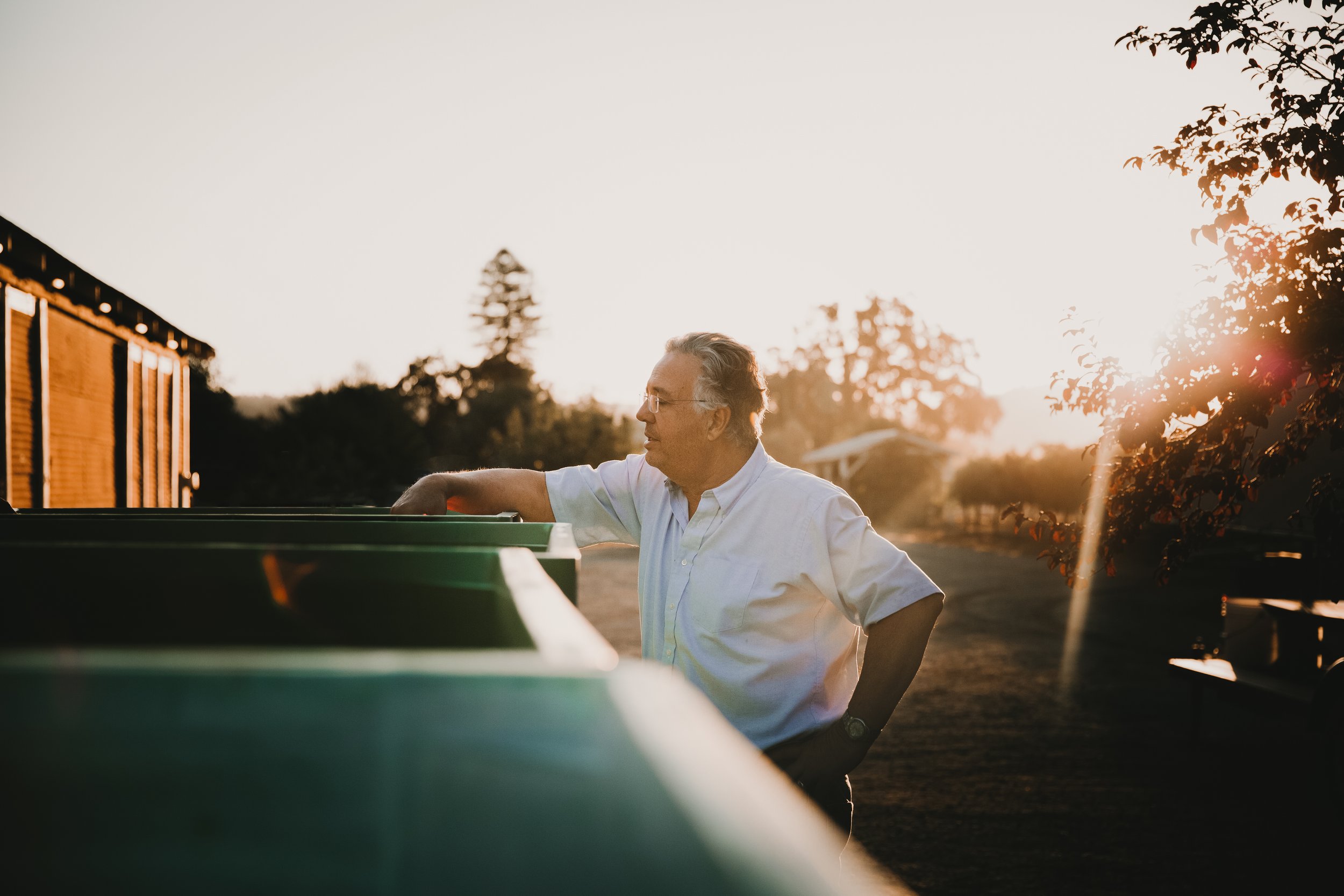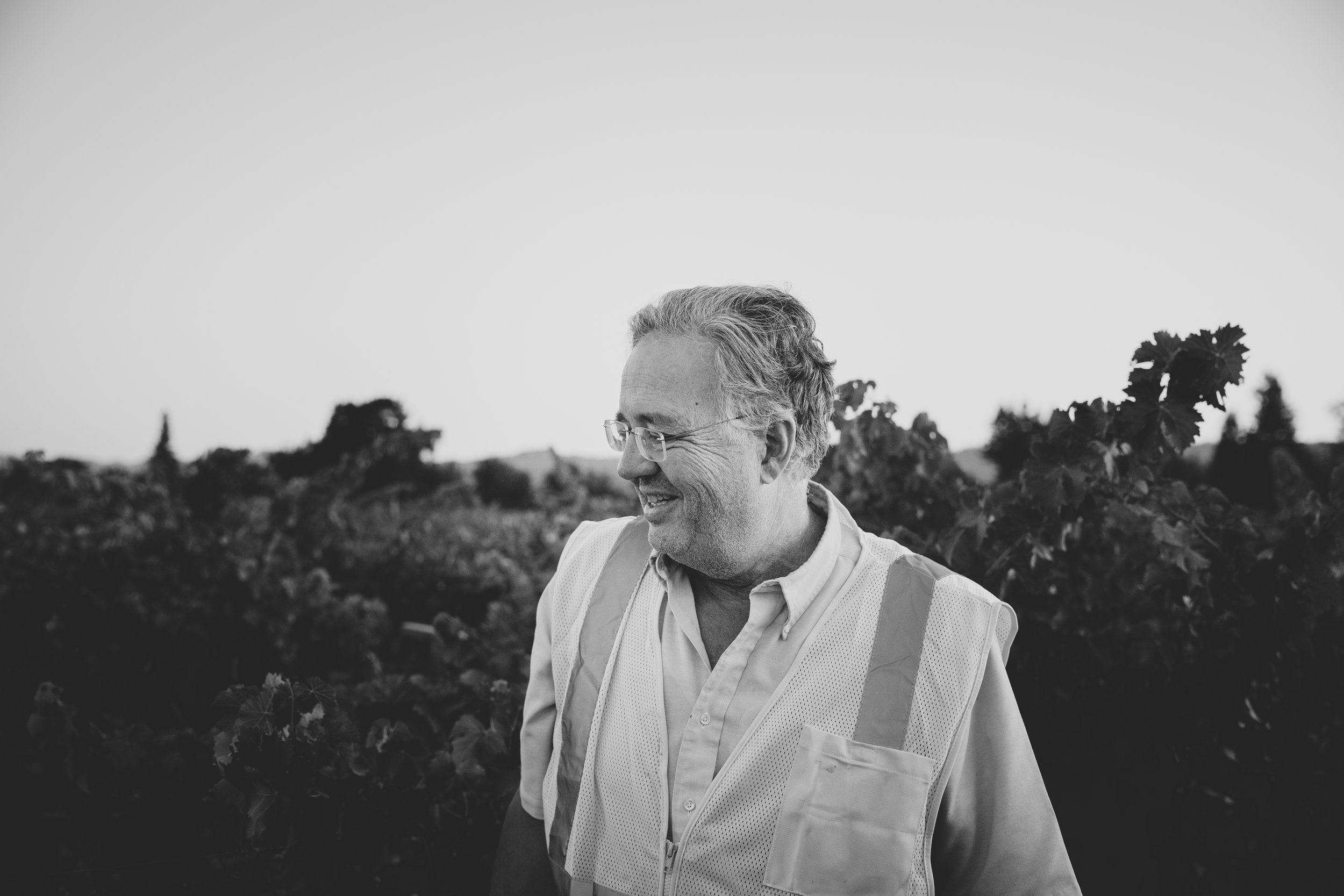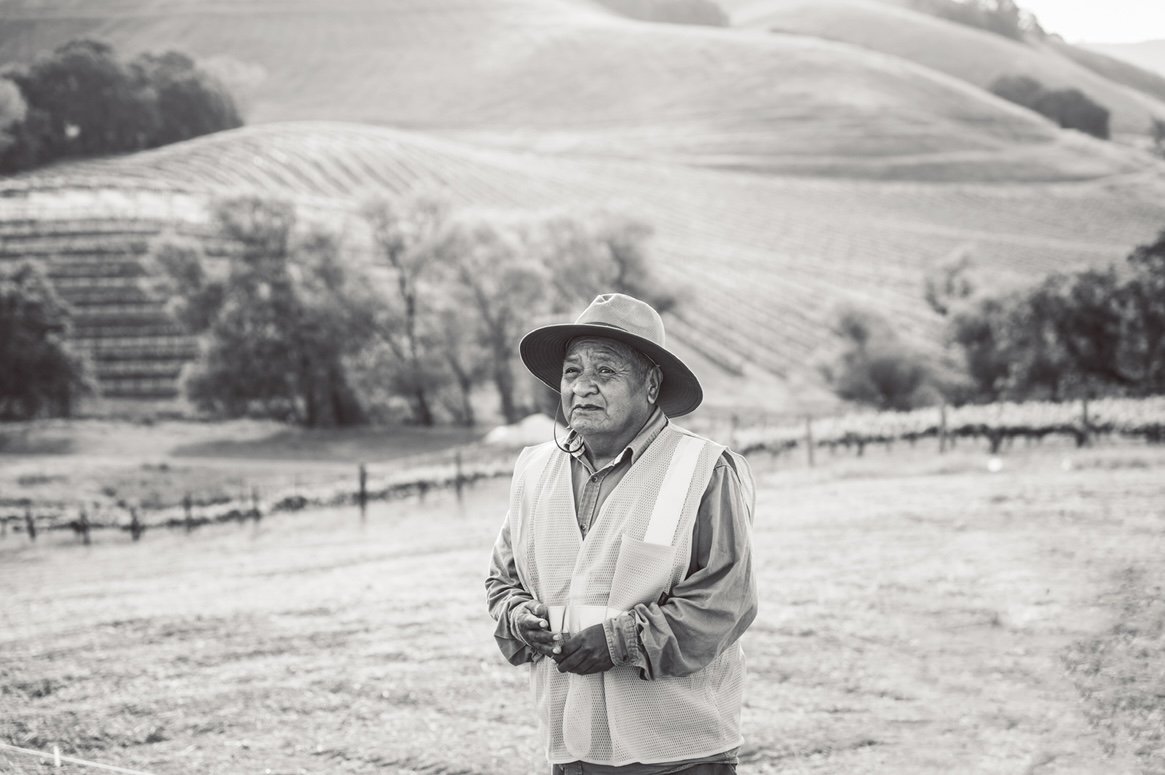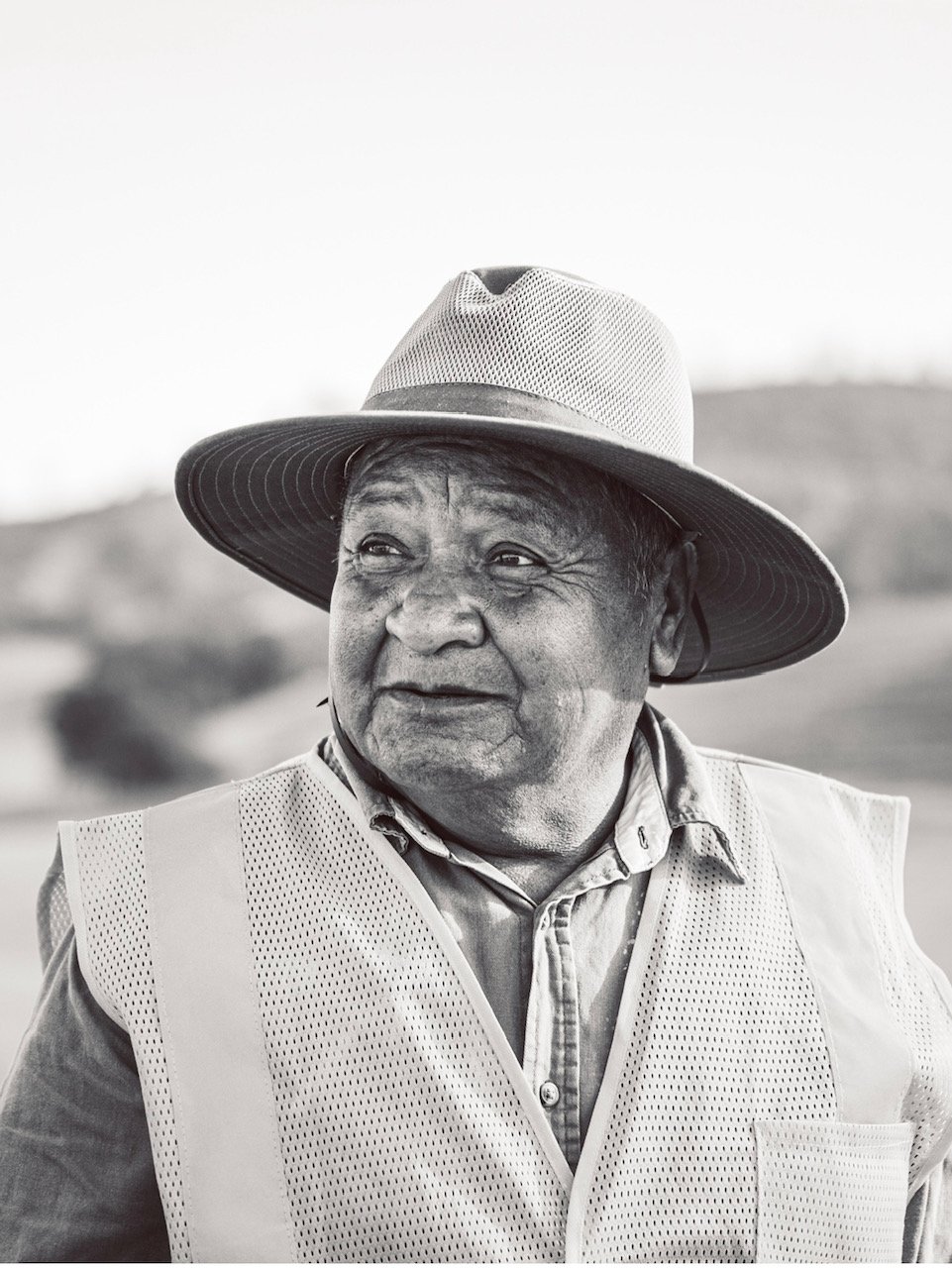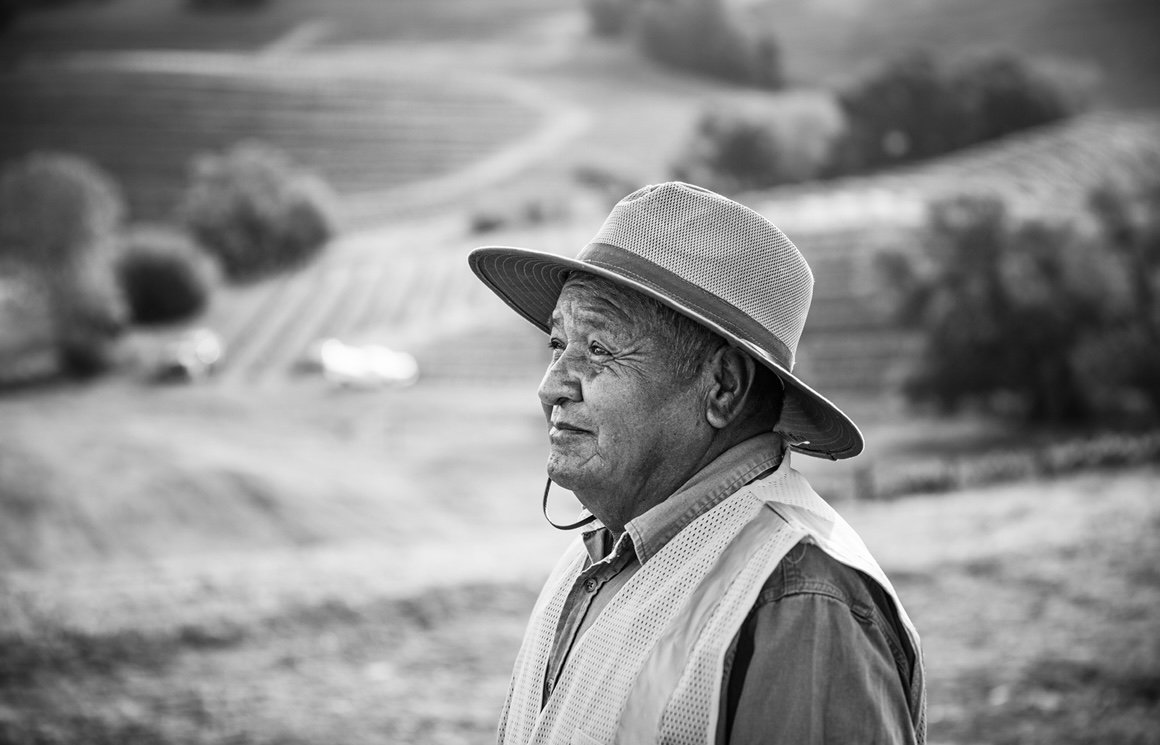During the winter months, grapevines are resting in dormancy. It prepares them for the new growing season - start of a new vintage.
Pruning is the act of trimming growth from the previous year’s canes. Usually about 90% of the wood is removed, to balance the buds. that will help to maintain health and future production of the grapevine over time. When a vineyard is pruned depends on the site itself, and is always differnt. Factors such as well as grape variety, rootstock are taken into account, and the pruning is modified to these variables. Fruit quality and production quantity all begins with how a grapevine is pruned. The number of shoots or positions on a vine are decided during pruning—controlling the cluster size, count and the overall quality potential of the grape being grown.
With grapevines, there are two main ways to prune:
Spur Pruning: This is done on vines that have one or two bilateral arms (a permanent cordon) trained along a trellis system. These are the classic "T” shaped vines that come to mind when thinking about a dormant grapevine.
Cane Pruning: These vines consist of a vine trunk, head and multiple canes from the previous years that are left behind when pruning. Those canes are laid down and tied to the training wire.
At the end of the growing season, those canes are removed, and new canes will replace them for the next vintage.




